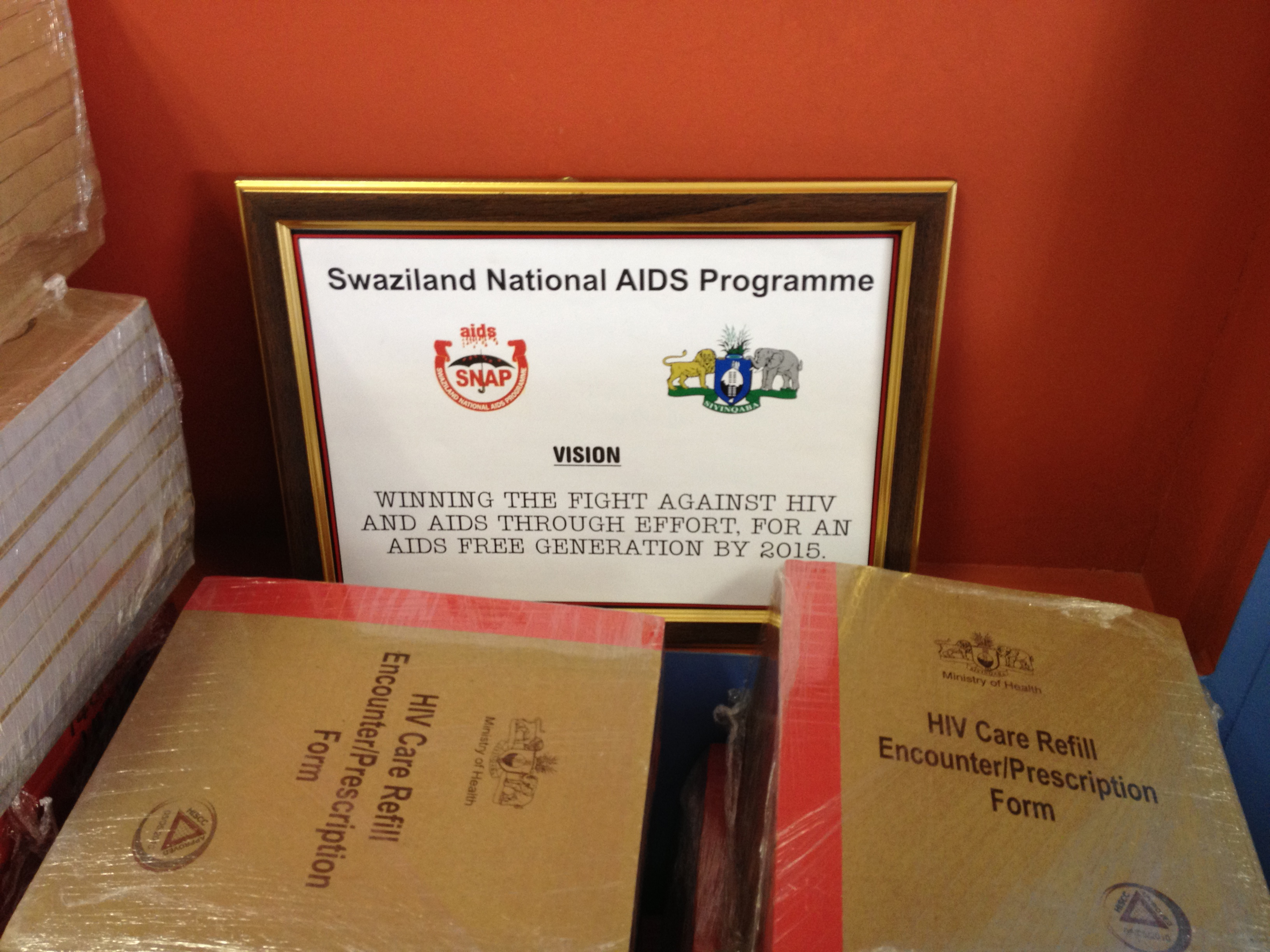Treat to prevent
Treatment, it seemed, had made the difference. Controlling an epidemic meant preventing new infections, and by 2011 a growing body of evidence showed that treating HIV-positive people with antiretroviral drugs also reduced new infections. [37] "The more people you can effectively treat, the fewer new infections you should be seeing in your population," says ICAP’s Abrams. "What treatment does is it shuts down the virus in your blood, and the virus stops reproducing."
In April 2011, SNAP launched a treatment-as-prevention framework that made treatment Swaziland's primary approach to reining in the epidemic. “We found that people who were not on [antiretroviral therapy] had high viral loads, compared to those who are on ART,” says Okello. “These high viral loads made us start thinking we need to have a goal to reduce new infections. So issues like early treatment came in, including treatment as prevention.” She adds:
In the beginning, our problem was focusing on reducing morbidity and mortality. So now that that has been reduced—and the graphs are very positive showing that this is reduced—we are now moving into saying, can we reduce new infections using treatment, because of the high viral loads among the community.
The treatment-as-prevention framework focused on preventing mother-to-child transmission and prioritized treating pregnant women. The previous year, WHO had updated its guidelines for HIV-positive pregnant and breast-feeding women, resulting in a simplified approach. For the less seriously ill, instead of different regimens for pregnancy, delivery and breast-feeding, the WHO recommended triple antiretroviral therapy from the 14th week of pregnancy until one week after breast-feeding ended. This was convenient because it was easier to stock and administer one regimen than three. CD4 counts were the indicator of who was less seriously ill, and therefore who qualified for the simplified regimen. The 2010 guidelines were labeled Option B.
Option B+. Still, testing for CD4 levels, the cornerstone of determining eligibility for antiretroviral treatment, remained a challenge for developing countries, especially in rural areas. In July 2011, Malawi’s Ministry of Health implemented a variant of Option B, dubbed Option B+, that did away with CD4 testing and simply gave all HIV-positive pregnant and breast-feeding women triple antiretroviral therapy for life. [38] By using a single approach, Malawi was able to increase the percentage of HIV-positive pregnant women who received treatment. Other countries, including Uganda and Tanzania, followed suit.

SNAP plaque and refill forms
Others, including Swaziland, were intrigued. But there was a drawback. Unfortunately, while Option B+ increased the number of pregnant women in treatment, it also increased the volume of ARTs needed. Worse, just as Swaziland and several countries began to consider Option B+, a major international source of drug funding dried up. On November 23, 2011, Global Fund canceled all disbursements worldwide because it was unable to collect $2.2 billion in pledged donations. [39] The end of Global Fund support forced Swaziland's transition almost completely to self-funding. Swaziland’s budget for antiretroviral drugs that first year without Global Fund, 2012-13, was $13.3 million (102.1 million emalangeni). SNAP survived the sudden loss of Global Fund, but it did so without the added financial burden of Option B+.
Despite the absence of Global Fund and the increased strain on individual country budgets for anti-retroviral drugs, just five months later, in April 2012, WHO formally recommended Option B+. [40] The benefits were compelling: more pregnant women likely to receive treatment, protection against mother-to-child transmission in subsequent pregnancies, protection for HIV-negative partners, and simplified ART service delivery. In addition to reducing transmission, it promised to save lives by improving mother and infant health, says Okello. Treating all HIV-positive pregnant women for life would mean "a reduction in maternal mortality [from] HIV related complications in pregnancy due to HIV positive mothers being healthier, [and] a reduction in infant mortality due to less opportunistic infections among children," she says. [41]
[37] “Treating HIV-positive People with Antiretrovirals Protects Partners from Infection,” National Institutes of Health (NIH) News, May 12, 2011. See: http://www.niaid.nih.gov/news/newsreleases/2011/pages/hptn052.aspx
[38] “Impact of an Innovative Approach to Prevent Mother-to-Child Transmission of HIV-Malawi, July 2011–September 2012,” CEC Morbidity and Mortality Weekly Report , March 1, 2013. See: http://www.cdc.gov/mmwr/preview/mmwrhtml/mm6208a3.htm
[39] Donald G. McNeil Jr., “Global Fund Will Pause New Grants and Seek New Manager,” New York Times , November 23, 2011. See: http://www.nytimes.com/2011/11/24/health/global-aids-fund-cancels-fund-raising-and-seeks-new-manager.html?_r=0
[40] WHO, Use of antiretroviral drugs for treating pregnant women and preventing HIV infection in infants , April 2012. See: http://www.who.int/hiv/pub/mtct/iatt_optionBplus_toolkit/en/
[41] Author's e-mail communication with Okello on September 6, 2014.